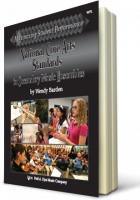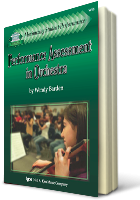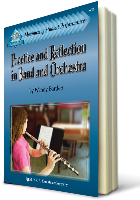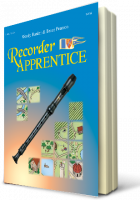Positive classroom environment: Relationships and rules
Looking for ways to refresh your approach to classroom management? Many teachers—from young to experienced—have found practical ideas in David Newell’s book, Classroom Management in the Music Room. In it, Newell begins by describing several factors that contribute to a positive classroom environment including:
- Students and teacher have formed a community of learners
- Students know what is expected of them
- Students know what will happen if they don’t do what is expected, and agree that the consequences are fair
- Teachers are firm, fair, and consistent every day.
First things first! Strong teacher-student and student-student relationships lead to a community of learners—a positive classroom environment. Healthy relationships mean respect, trust, support, interdependence, belonging. Students need—and respond to— teachers who care about them as both musicians and as people. On the first days of school Newell reminds us, “Being naturally friendly and genuinely welcoming works so much better than the opposite.” (Anyone ever tell you not to smile before winter break?)
How can we develop relationships with individual students when we see them in large ensembles, or have a new class every 25 minutes? A minute here, and a minute there, adds up!
- Greet students at the door with a genuine smile, even though it’s tempting to be getting your materials set for class
- Learn students’ names quickly, then think before you speak so you don’t call them by a sibling’s name
- Move into close proximity of each student every day to make a connection, but also to offer assistance, if needed
- Whenever you have the chance, talk and listen to students individually—everything but music
- Pay attention to the announcements to learn about students’ accomplishments in other classes or activities and acknowledge them
- Interact with students outside of music by judging the school science fair or working at the school carnival
- Attend a basketball game or school play and bring your family
- Include team-building activities throughout the year, and more the first few days of the class.
Be patient and persistent. Relationship-building takes time, so isn’t it fortunate that we often work with our students multiple years?
On to classroom rules. Newell explains classroom rules as simply the way things are done. Rules should become habits that don’t require any thinking. He suggests limiting the number of classroom rules to five or less, and keeping them simple. Post the rules so they can be easily referenced and be sure both teachers and students are able to explain why each rule is important to music class.
There are two ways to generate classroom rules. A) The teacher develops the rules and presents them to students or B) Each class works together to develop their rules. Either way, rules are not learned verbally. They are introduced verbally, but they are learned through practice.
Routines also play a part in classroom management. These, too, should be automatic. What is the safest, most calm and efficient way to:
- Enter the music room
- Leave the music room
- Distribute and/or collect papers, books, pencils, writing boards, or other materials
- Adjust the physical set-up for different activities?
Consequences. Consequences for not doing what’s expected should be logical, and must be clearly understood by everyone from the start. Make consequences about learning and redirecting behaviors, not about punishment. When needed, it’s often most effective to talk to students individually rather than in front of their peers. Be firm, fair, and consistent—whether it’s the student who pushes your buttons everyday, the most talented musician, or someone in between.
Yes, and… David Newell reminds us that, as the year progresses, something other than the rules and consequences must take over the discipline in a classroom. The thing that must take over is the music. “In the fully functioning music room, students and teachers alike come to class with only one thing in mind—to make music. The rules and the consequences are essentially forgotten.”
Thanks for pausing with me for a few minutes in your busy week. Have a good one!
____________________
Barden, Wendy. Connecting Students and Teachers to Create an Ensemble. San Diego: Kjos Music Press (2011).
Newell, David. Classroom Management in the Music Room: “Pin-Drop Quiet” Classes and Rehearsals. San Diego: Kjos Music Press (2012).
Responsive Classroom, About Responsive Classroom, “Principles and Practices of Responsive Classroom.” https://www.responsiveclassroom.org/principles-and-practices-responsive-classroom (accessed December 4, 2014).
Robert, Gayle. “The Difference is Amazing,” Responsive Classroom, Resources for Educators, https://www.responsiveclassroom.org/article/difference-amazing, Responsive Classroom Newsletter April 2001 (accessed December 4, 2014).

















